Sara sees cooking and baking as a delicious way to…
Advertising doesn’t always lie: of the finer things in life happily some are affordable. Like homemade mustard.
By Sara Clevering
Anyone my age remembers that Grey Poupon ad for mustard. One limo drives up next to the other, and the dapper gentleman asks: “Pardon me, do you have any Grey Poupon”? And with a heavy French accent (so you know it’s good) comes the response: “but of course” as the jar of mustard is passed from one limo to the other. And we’ve all learned the wonder that is Dijon mustard, so fine it’s even “made with white wine.”
The smooth voiceover explains that fortunately not all of life’s pleasures need be expensive ones, and despite its pretensions, Grey Poupon is definitively a supermarket brand–I’m sure true food snobs would only serve their Alsatian choucroute garnie or Mangalitsa heritage breed bratwust with fancy jars of small-batch mustards from zingerman’s or gilt taste.
It would be a lie to say that I don’t wistfully salivate at products like this, but it would also be a lie to say that I don’t feel guilty about plunking down that much for a jar of mustard. As it is, every week I gawk in horror at the grocery bill–I don’t know why I keep thinking, “this week will be different.” It’s sort of like how every night my kids are surprised that they do actually have to go to bed. You know, just like every other night of their entire lives.
Some splurges I am willing to indulge in when it comes to food, but fortunately when it comes to mustard, I’ve learned there’s no need. The homemade variety is incredibly easy to make and absolutely delicious. And it’s cool to make your own mustard! Although I’ve really only dabbled in basic flavors, it’s endlessly customizable as well: just see these amazing-looking recipes from Jammy Chicken, Local Kitchen, and Kiss My Spatula. You make smooth mustards from a powder, grainy mustards from mustard seeds, use vinegar or your choice of alcohol, and add herbs and spices. You could even whip up a bunch and can it, though since the raw ingredients keep so well and because it’s so easy to make single batches as needed, I don’t even bother.
The only caveat is that you need to start your mustard about a week before you want to use it. There’s hardly any work, but it does take a few days of waiting: making mustard is a fascinating lesson in how flavor can mellow and change over time. You’ve certainly seen recipes for soups and stews that are “even better the next day.” With mustard, you go from a product that is so pungent as to be almost inedible to something deliciously sharp and flavorful. (I’m not kidding about this: when tasted too early, even repeat batches of mustard have sent me running to my pantry to be sure the vinegars I’d used hadn’t gone off. Can vinegar even go off? I don’t know). Don’t be scared off–it mellows relatively quickly (in a matter of days) so you will soon be enjoying your concoction. And thereafter it will keep for months in your fridge.
So, advertising doesn’t lie: of the finer things in life happily some are affordable. And delicious and easy to make to boot! Bon Appetit!
(And, while unrelated to mustard, on the topic of 80’s ads, I can’t resist linking to this one for Bugle Boy).
Homemade Mustard with Balsamic Vinegar (adapted from Mark Bittman)
Notes: Mark Bittman says to be sure to use an equal mix of brown and yellow mustard seeds else the final result will be too acrid. I’ve had a hard time finding brown mustard seeds in the stores, so I order online from The Spice House, though I recently realized that black seeds are often stocked in large bags in the Indian foods section. That being said, I’ve seen many recipes that rely solely on one or the other so you can try one of the links I mentioned above or do a quick google search if you’re having trouble. You could also use a recipe that relies on mustard powder if you don’t have a blender. I’ve said it already, but the raw ingredients are so cheap that you can happily experiment away!
- 2T yellow mustard seeds
- 2T brown or black mustard seeds
- 1/4c water
- 1/4c champagne or white wine vinegar (5% or more acidity)
- 1T balsamic vinegar
- pinch salt
Sara sees cooking and baking as a delicious way to connect with the past and travel the world from her kitchen. She is commited to preparing homemade, unprocessed meals for her family and is always looking for tricks to fit this into a busy schedule. Sara is currently in the Boston area after several years living in London, Spain, and the Czech Republic, and travelling extensively in Eastern and Western Europe, always making sure to experience local culture through food. She also blogs with her sisters at www.threecleversisters.com


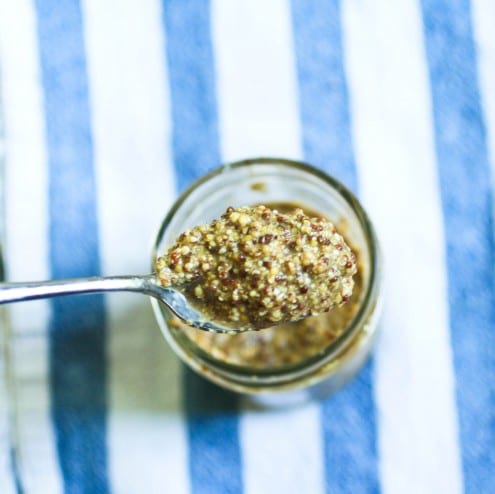
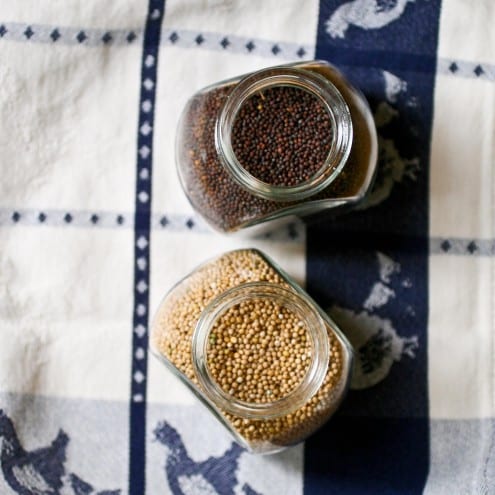
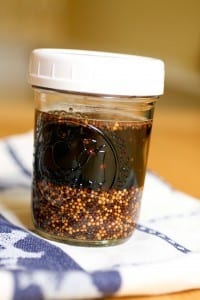
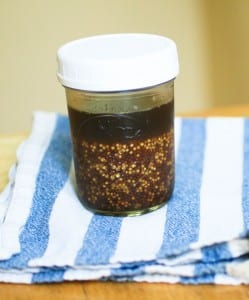
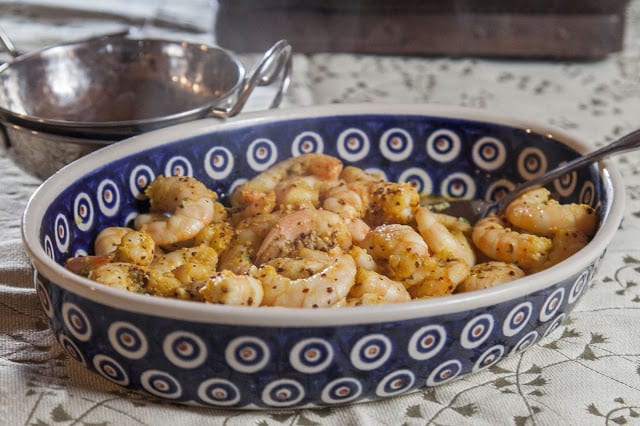
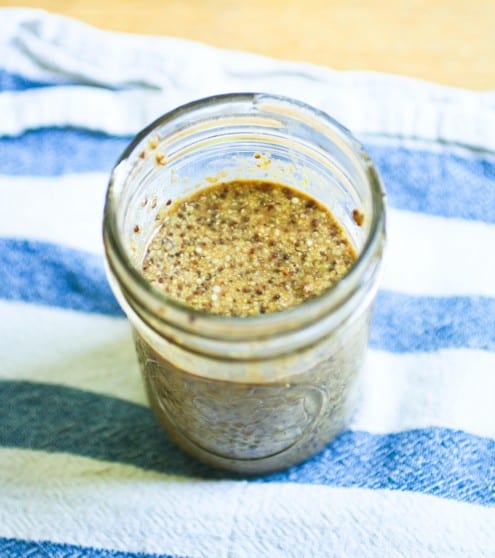
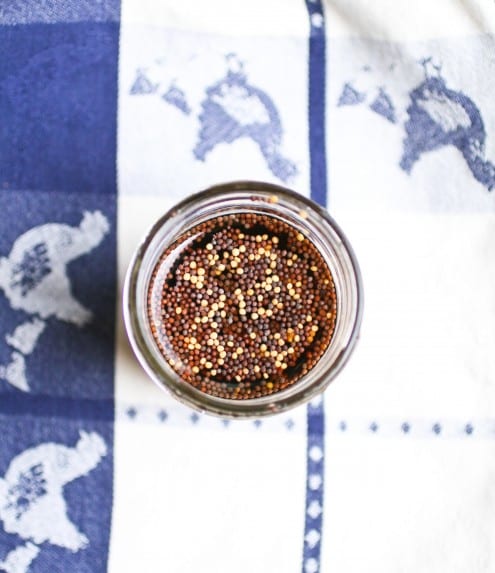

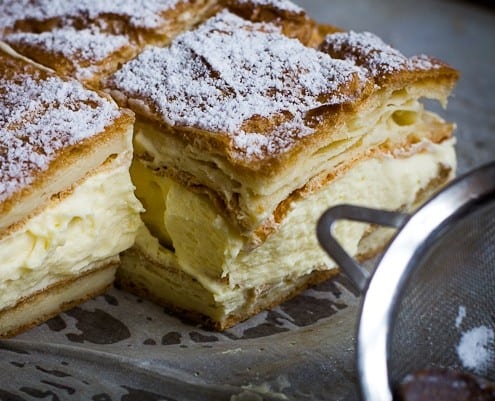
I have always read that putting mustard making in the “frig” will slow down the ‘calming’ effect. I have tried both and well, the frig does take longer but I make mine in groups so tasting and adjusting is just part of the fun of making my own. So, if someone gets irritated at slowness of the ‘calming’ of the mustard seeds, patience! It will happen.
Oh, I don’t worry about it going bad, vinegar stops that from happening.